Gardeners often think that the point of the broccoli harvest is to get the main harvest of the first large heads, and then they’re done.

To be sure, those early heads are excellent, and they add up to a lot in a single cutting.
While this may be the main reason to grow broccoli, it’s not the only reason; not at all. After you cut that main head harvest, your broccoli plants will continue to grow and produce for you.
And there are several things that you can harvest from your broccoli plants.
Jump to:
- 5 Things to Harvest from Broccoli – Besides the Main Head
- 1. Continue Floret Harvests Through (and After) Frost
- 2. The Leaves are Edible!
- 3. You Can Eat the Stems, too.
- 4. Harvesting Broccoli Flowers
- 5. Collecting Seeds for Microgreens
- Bees Love Broccoli Flowers, Too!
- Most Brassicas Have Other Edible Parts
- Growing Broccoli is a Good Use of Garden Space and Time
5 Things to Harvest from Broccoli – Besides the Main Head
Here are five other things – besides the main head – that you can harvest and use from the broccoli plant.
Think about these uses and other harvests before you go pulling out those mature, productive plants or before you think about planting a succession crop (which is really unnecessary with broccoli!).
1. Continue Floret Harvests Through (and After) Frost
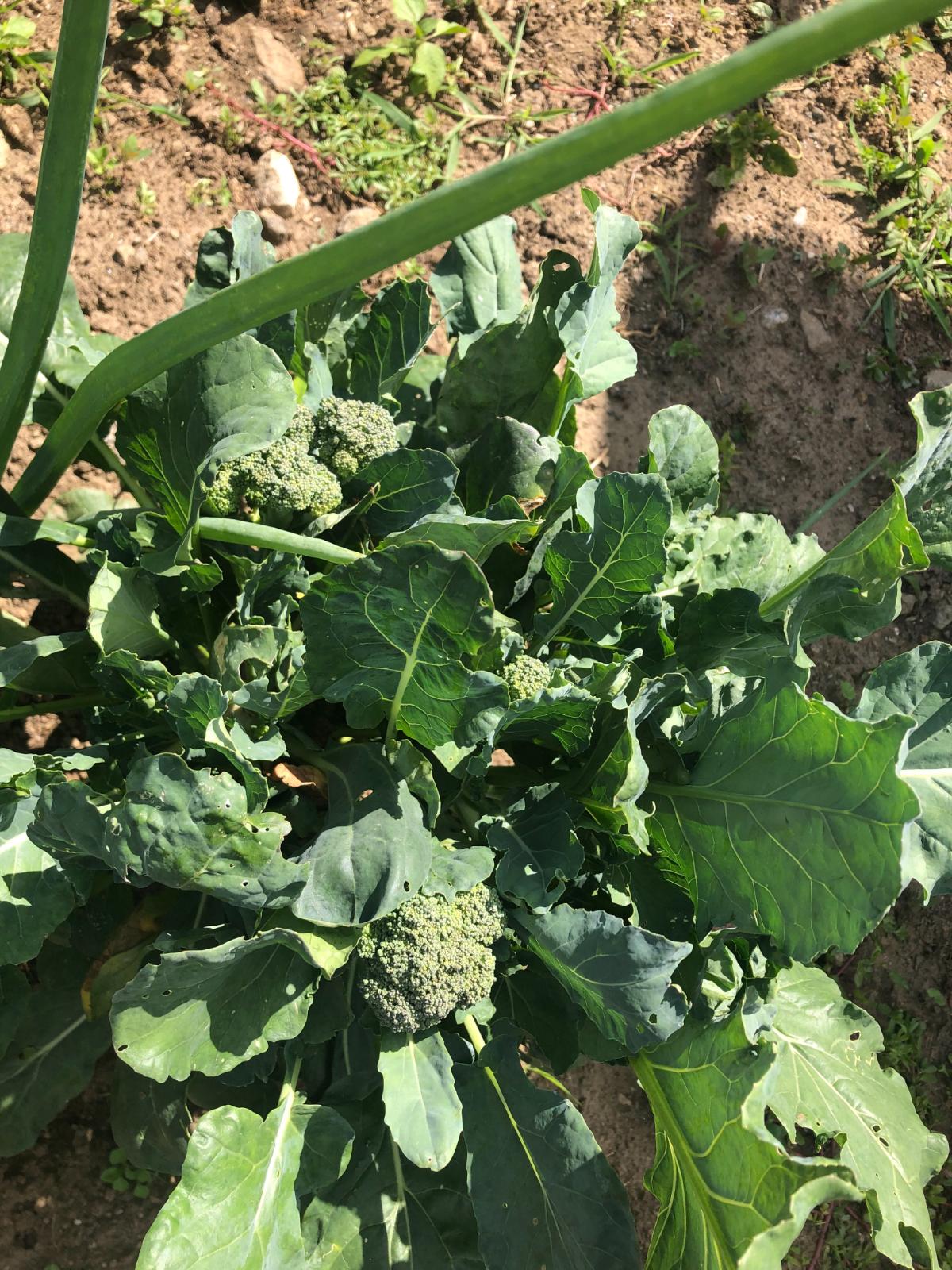
Some gardeners know this, but many do not.
After you cut that main head of broccoli off your broccoli plant, it will continue to grow more broccoli.
It will not grow another large head like that first main head, but it will grow side shoots that are basically small heads or single florets. Perfect! You don’t even need to cut them down to size most of the time! Just pluck and use!
The size of the side shoots will vary depending on growing conditions and the variety of broccoli plant, but it is a continuous, sizable harvest that is well worth keeping those mature plants going.
You will find that you will get more edible florets from the side shoots over the rest of the season than you get in those first large main heads.
Definitely worth it!
Broccoli is a very cold hardy plant, and those florets will continue to grow and be harvestable even after frost hits. You may be amazed at how long you can harvest broccoli this way. It usually takes a hard freeze before broccoli is finished for the season.
2. The Leaves are Edible!

The leaves of broccoli plants are completely edible, and they can be used just like cabbage and other brassica leaves.
You can shred them to make cole slaw, add them fresh to salad greens, chop and sauté them, make pureed soup, cabbage/broccoli leaf rolls, dry them into powder to season roasted vegetables...
There really is an awful lot you can do with broccoli leaves!
Keep in mind, the leaves are edible even before you harvest the main heads (and after), as long as you’re leaving enough for the plant to photosynthesize and feed itself.
3. You Can Eat the Stems, too.
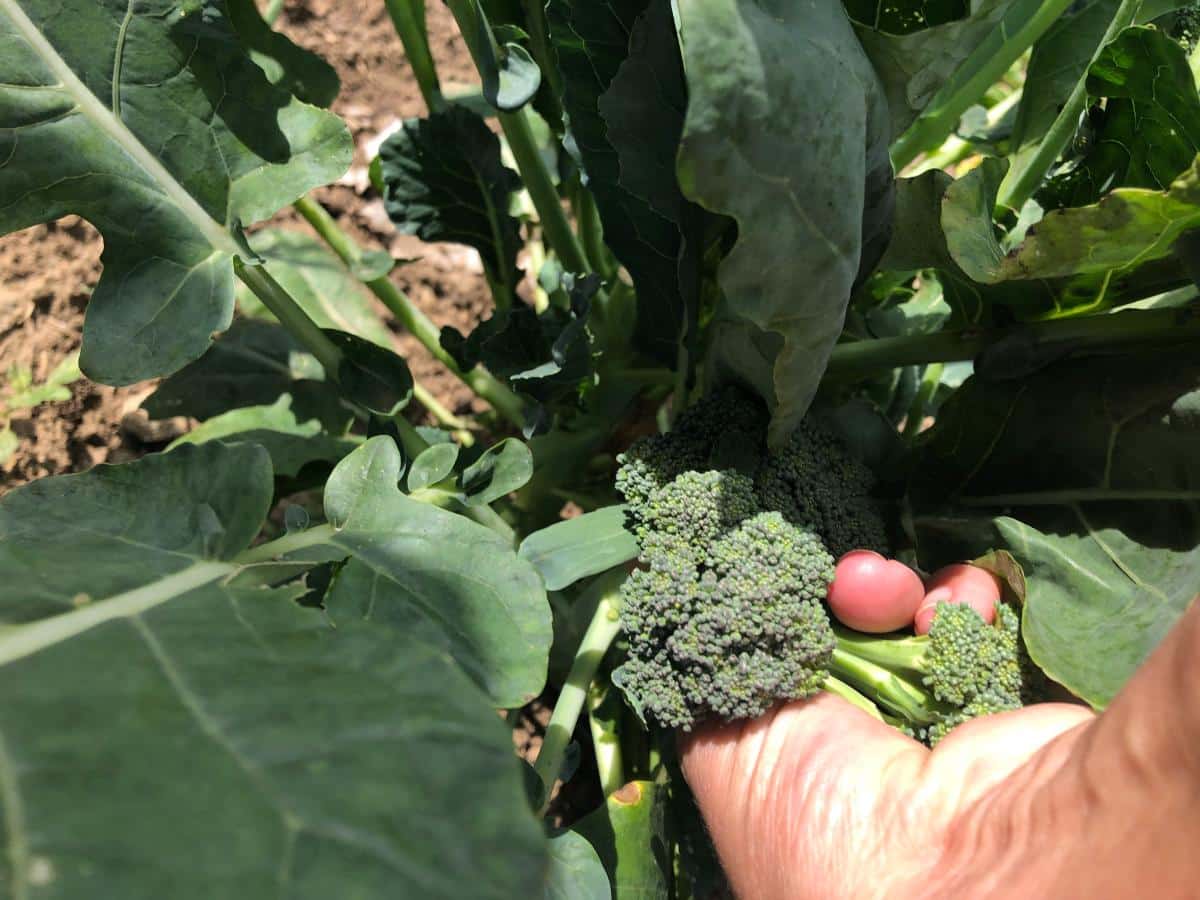
There is always some stem that is cut with the main heads, and there are often sizable sections of stem that are left on the plant and essentially go to waste.
These can be cut and used as chopped broccoli pieces, too. The closer they are to the head, the more tender they will be, but even lower stems are edible.
If you do find the outside of them tough, just peel off the outer layer and use the more tender part of the interior of the stem.
There is nothing toxic or harmful about broccoli stems. You just have to decide which parts of them have the texture you like best and go from there.
Stem pieces are good for roasting because they hold up well. They are also great for creamed broccoli soup since they get pureed anyway.
4. Harvesting Broccoli Flowers
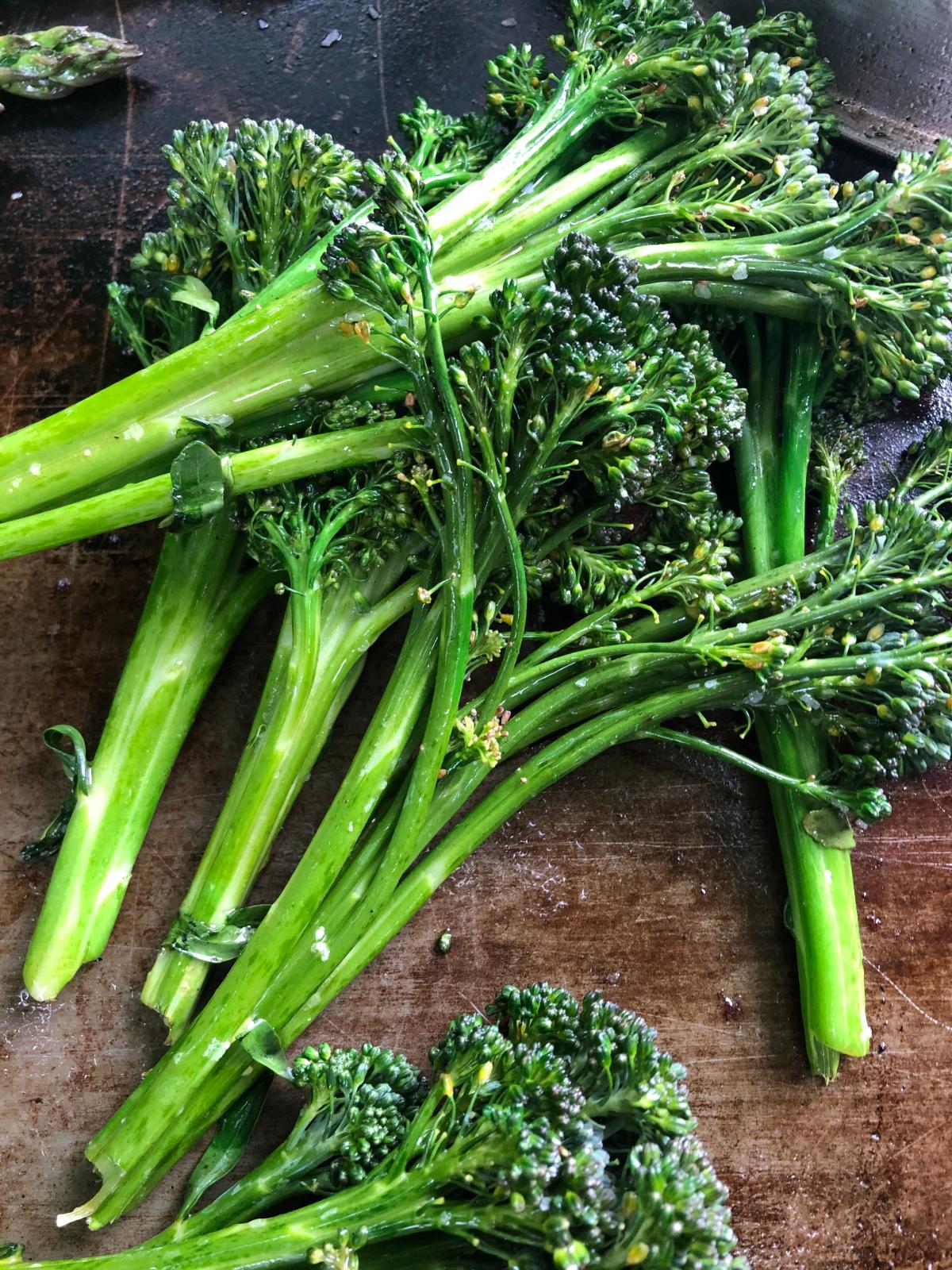
We often think of broccoli as finished once it has gone to flower. Once again, that’s just not true.
You can eat the flowers of the broccoli plant. You can eat the heads and florets (heads that flower) that are a little open or in between. They are a lot like broccolini.
The flowers are completely edible. They can be prepared any way you would prepare broccoli florets.
Broccoli flowers are a nice yellow color. They can be eaten fresh and raw, and they also make nice additions to salads and nice edible garnishes.
5. Collecting Seeds for Microgreens

Unless you have taken pains to grow an open pollinated or heirloom variety of broccoli, the hybrid plants that most of us grow are not good candidates for seed saving. This is because those hybrids will revert to one or the other of the parent stock and they won’t breed true as full plants next year.
You would also have to take pains to isolate those plants to prevent cross pollination with other brassicas.
...That’s if you want to save seeds to grow new, productive garden plants and if you care about the outcome.
Microgreens, however, don’t need to be as strictly protected. Microgreens are cut as small sprouting plants that are never allowed to mature.
We harvest them for their flavor and their nutrients. They’re delicious and highly nutritious. They are also very easy to grow, harvested within one to three weeks, and don’t even require grow lights, even indoors in the winter.
The one drawback to microgreens is that they are seed intensive. It takes a lot of seed to grow any amount of microgreens (because each seed is a plant).
An excellent solution? Collect seeds from plants in your garden that have gone to seed. Broccoli is one of the most popular types of microgreen seeds, as are other related members of the family like cauliflower, cabbage, book choy, kale, and others.
So, if you do have broccoli plants go a little too far into flower, fear not. There’s still a use for them! Let them set seed and collect it for winter microgreens!
(Do note that some varieties may need a cold spell before they produce seed, but many broccoli varieties will go to seed in the first season if you let them.)
Bees Love Broccoli Flowers, Too!
Broccoli flowers are a good food source for bees and pollinators. If you let your broccoli and brassica family plants go to seed, you’ll see the bees buzzing all around them.
This means that broccoli is a good potential food source for pollinators in the fall when there are few other things around (assuming you let it go to flower, of course).
If you live in a climate where broccoli can go dormant and survive overwinter, it may go to flower immediately in the spring, and this can be an excellent early source of food before more tender flowering plants can grow.
Most Brassicas Have Other Edible Parts

Most plants in the brassica family have other edible parts besides their main harvest. The stems, leaves, and flowers are often edible.
This is true for things like Bok choy, kale, cabbage, cauliflower, and Brussels sprouts.
You might think about whether there is more you can use from the other brassica plants in your garden or if there is a use if you leave them after your first intended harvest.
Growing Broccoli is a Good Use of Garden Space and Time
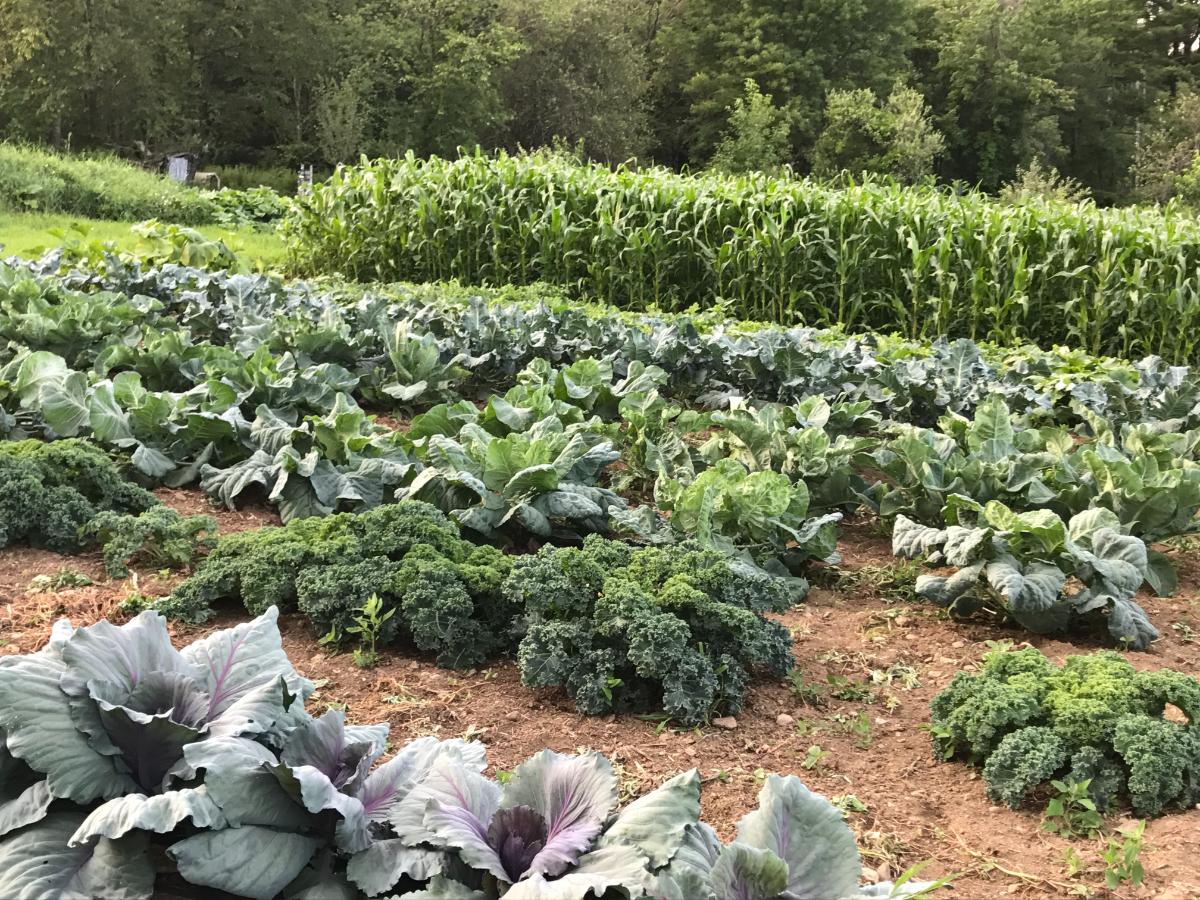
Given its long productive season, high yielding side shoots and auxiliary harvests, broccoli suddenly becomes an efficient, high-yielding plant that makes good use of the space in your garden.
Broccoli is subject to some insect pests, but if you control those you will find that broccoli is otherwise fairly low maintenance and easy to grow.
If you haven’t yet, give broccoli a go in your garden. And if you have, think about what else you can get from this popular plant!

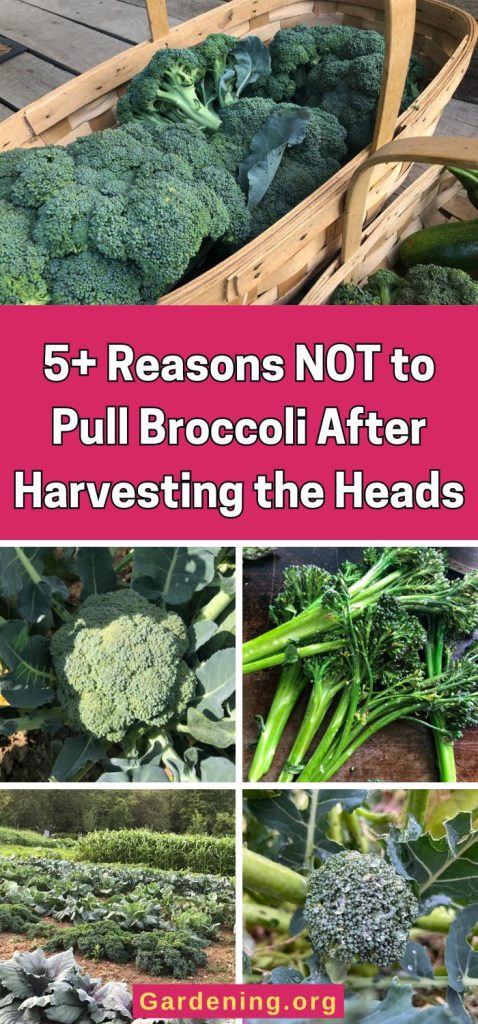
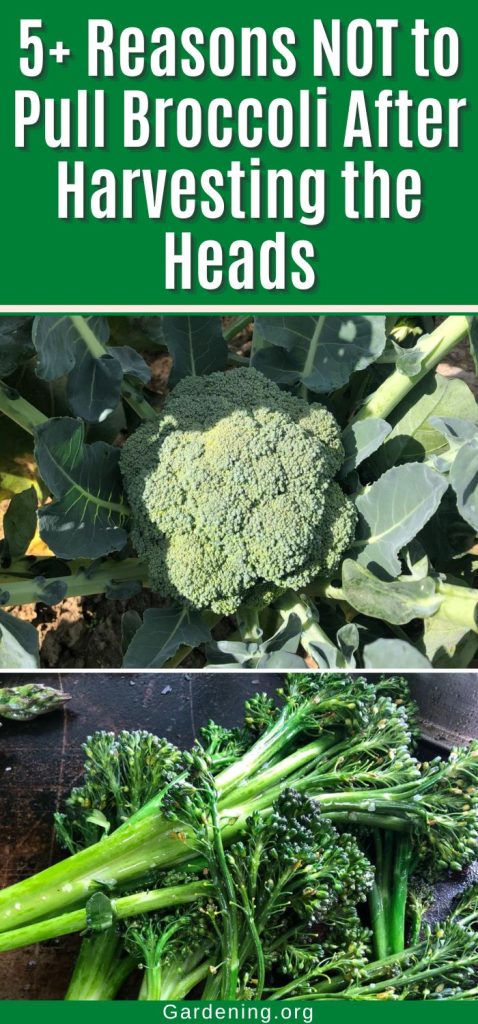
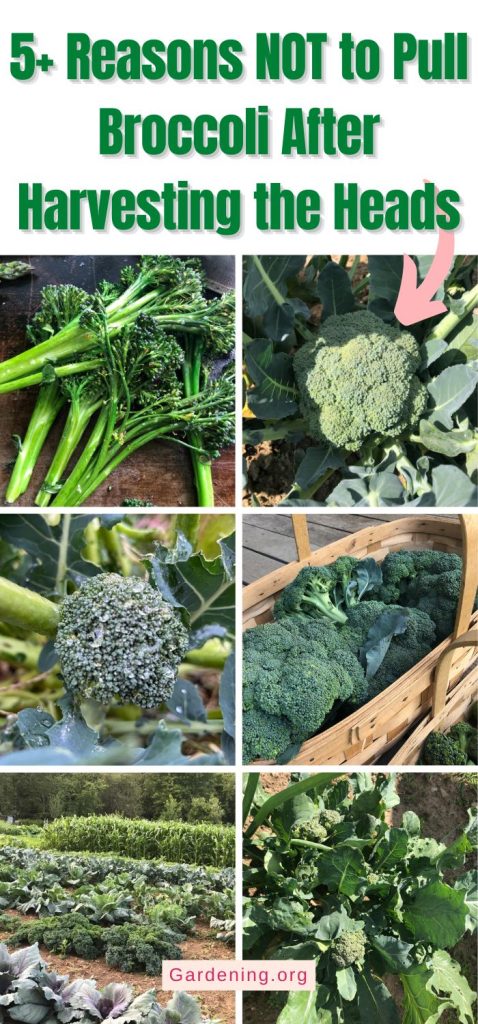
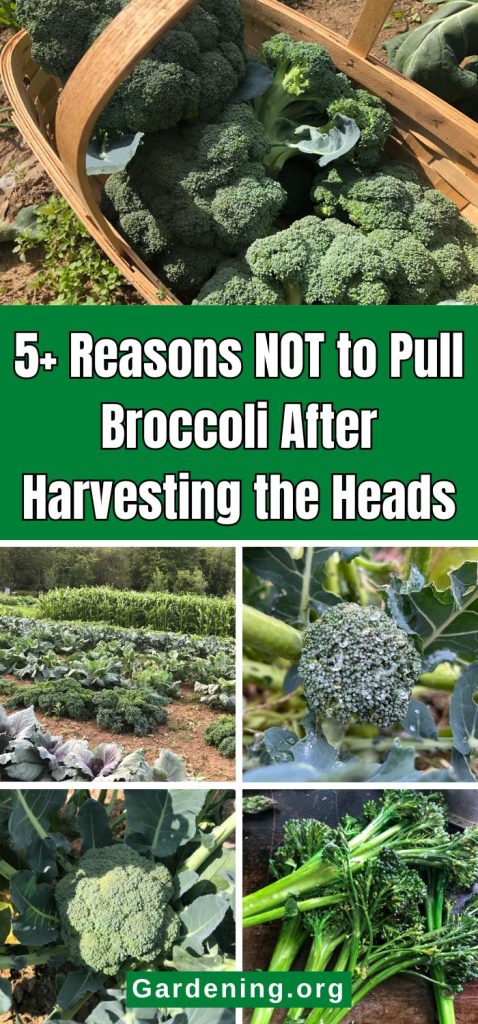




Leave a Reply